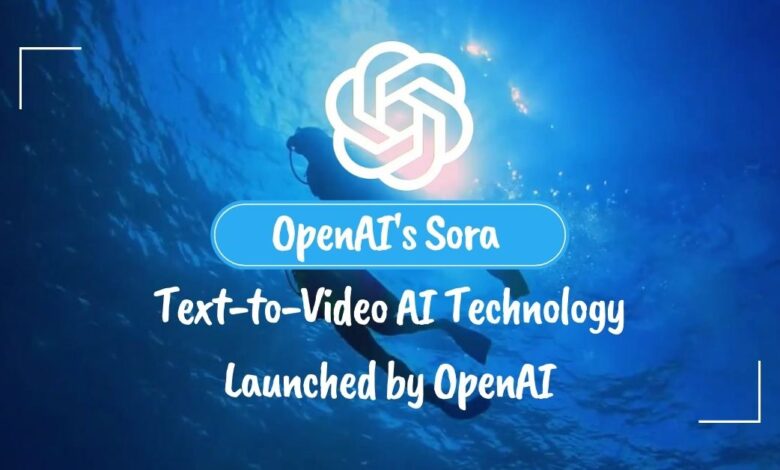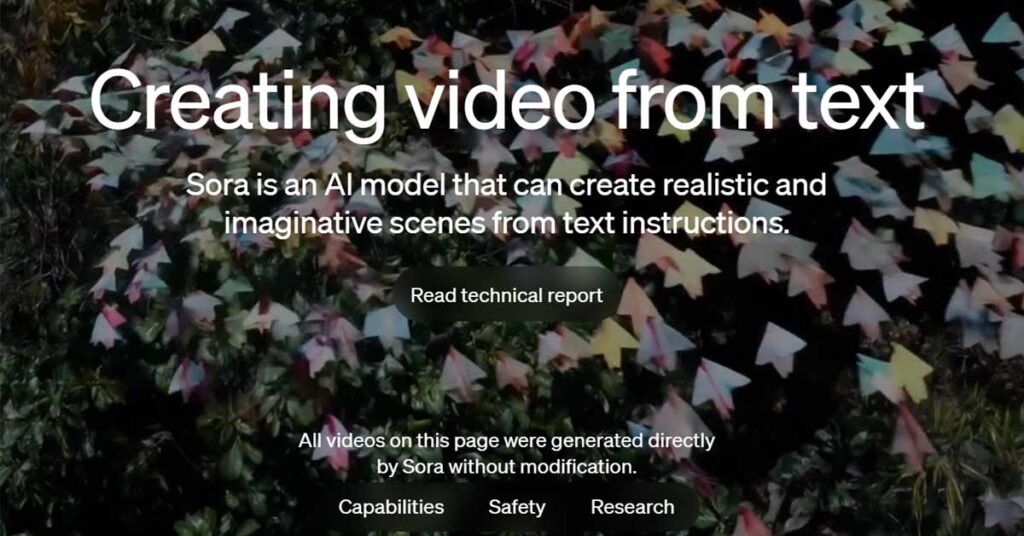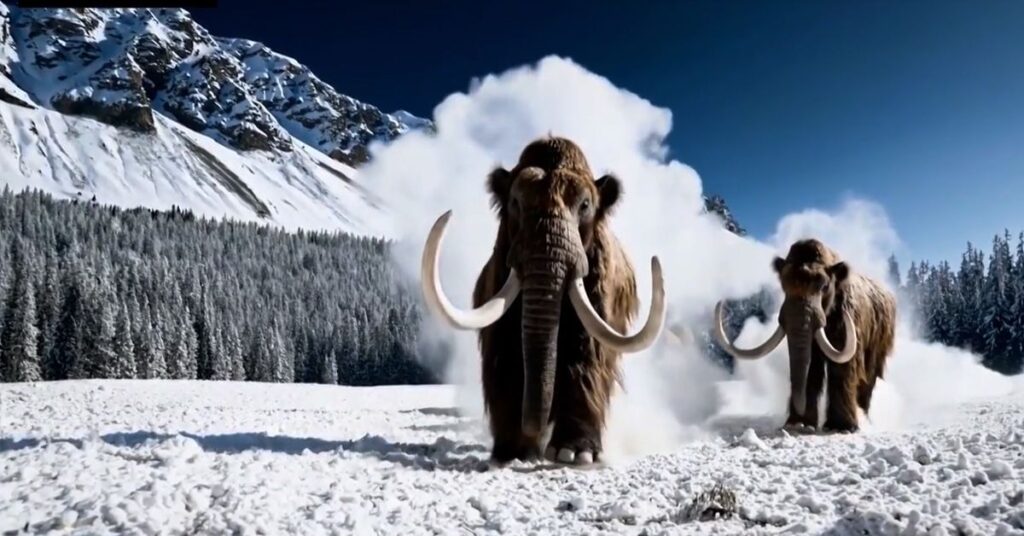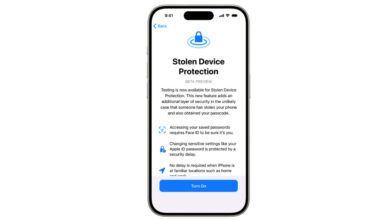OpenAI’s Sora Text-to-Video AI Technology Launched by OpenAI

OpenAI is introducing a fresh video-generation model named Sora. The company states that Sora can generate lifelike and creative scenes from textual commands. This OpenAI’s Sora text-to-video AI model empowers users to produce photorealistic videos, each lasting up to a minute, solely based on the prompts they provide.
Sora improves upon previous studies like DALL·E and GPT models by incorporating the recaptioning method from DALL·E 3, which generates detailed captions for visual training data. This enables the model to better adhere to the user’s text instructions when creating videos.
Table of Contents
OpenAI’s Sora Text-to-Video AI Capabilities

According to OpenAI’s blog post, Sora has many capabilities. Among them, a few are mentioned below.
- Complex Scenes Creation: Sora can create intricate scenes with multiple characters, specific movements, and detailed backgrounds.
- Understanding of the Physical World: Sora comprehends how objects exist in reality and accurately interprets props.
- Character Expression: Sora generates characters that express vibrant emotions convincingly.
- Still Image Conversion: The model can transform a still image into a video.
- Frame Completion and Extension: Sora can fill in missing frames in an existing video or lengthen it.
- Demonstrations in OpenAI’s Blog Post: Examples showcased in OpenAI’s blog post include an aerial view of California during the gold rush and a video simulating a view from inside a Tokyo train.
- Indicators of AI: Some generated videos exhibit characteristics that hint at artificial intelligence, such as odd movements like a shifting floor in a museum scene.
- Challenges with Complex Scene Physics: While OpenAI acknowledges that Sora may encounter difficulties accurately simulating the physics of complex scenes, the overall results remain impressive.
Evolution in Text-to-Image Technology

Advances in text-to-image technology have changed how we create pictures from words, making it more accessible and exciting. The current OpenAI’s Sora Text-to-Video AI is the latest technology for Text-to-Video conversion.
- Previous Advancements: Text-to-image generators like Midjourney were leading the way in converting words into images a couple of years ago.
- Rapid Improvement in Video Technology: Recently, there has been significant progress in video technology, with companies like Runway and Pika showcasing impressive text-to-video models.
- Competition from Google’s Lumiere: Google’s Lumiere is emerging as a key competitor to OpenAI in this field. It offers text-to-video tools similar to Sora and enables users to create videos from still images.
Access Restrictions on OpenAI’s Sora Text-to-Video AI
- Limited Availability: Sora is currently accessible only to “red teamers,” who are evaluating the model for potential risks and harms.
- Feedback Opportunities:
- OpenAI is also providing access to select visual artists, designers, and filmmakers for feedback purposes.
Model Limitations of OpenAI’s Sora Text-to-Video AI
- Physics Simulation: The existing model of Sora might not accurately simulate the physics of complex scenes.
- Interpretation Challenges:
- There may be instances where Sora fails to properly interpret cause-and-effect relationships.
You Might Also Like To Read
AI Girlfriends: A Comprehensive Guide to Virtual Relationships.
The Next Wave of Innovation in Google Bard Chatbot’s Latest Features.
FAQ’s
What is OpenAI’s Sora Text-to-Video AI?
OpenAI’s Sora Text-to-Video AI is an advanced technology that converts text instructions into realistic video content, allowing users to generate lifelike scenes from simple prompts.
How does OpenAI’s Sora Text-to-Video AI work?
Sora Text-to-Video AI uses sophisticated algorithms and deep learning techniques to understand textual inputs and translate them into visual elements, including characters, backgrounds, and motions, resulting in photorealistic videos.
What can I create with OpenAI’s Sora Text-to-Video AI?
With Sora Text-to-Video AI, users can create a wide range of visual content, including animated storytelling, product demonstrations, educational videos, and much more, all from text prompts.
Is OpenAI’s Sora Text-to-Video AI suitable for professional use?
Yes, OpenAI’s Sora Text-to-Video AI is designed to meet the needs of professionals in various industries, including filmmakers, designers, marketers, and educators, by providing high-quality video generation capabilities.
What are the limitations of OpenAI’s Sora Text-to-Video AI?
While Sora Text-to-Video AI offers impressive capabilities, it may have limitations in accurately simulating complex scenes and interpreting intricate cause-and-effect relationships, as noted by OpenAI.




